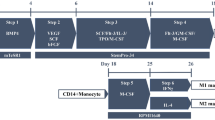Abstract
Background and Aims
Adenine is a uric acid pathway metabolite of no known function, and has recently been identified as a ligand for a rat G protein-coupled receptor. Due to the known role of other uric acid pathway metabolites in HSC biology, we tested the ability of adenine to induce HSC differentiation.
Methods
RT-PCR was performed for adenine receptor expression in T-6 and primary rat HSC. T-6 and primary rats HSC were cultured with and without adenine, and stellation examined. Next, we examined inhibition of calcium signaling using caged IP3. To test if adenine inhibits HSC chemotaxis T-6 cells and rat HSCs were cultured with or without adenine for 24 h in a transwell assay with PDGF as the chemoattractant. cDNA was prepared from T-6 and primary HSC for quantification of collagen 1 mRNA using real-time PCR.
Results
We found that mRNA for the adenine receptor is expressed in T-6 cells and primary rat HSC. Also, adenine induces HSC stellation and adenine inhibits IP3 mediated increase in cytosolic [Ca2+]i and inhibits chemotaxis in T-6 cells and primary rat HSC. Adenine was also shown to up-regulate α-SMA and collagen 1, and this effect is lost by using specific si-RNA for the adenine receptor. Finally, adenine inhibits endothelin-1-induced gel contraction.
Conclusions
The adenine receptor is present in T-6 cells and primary rats HSC. Adenine, via the adenine receptor, induces morphological change, and cytosolic calcium signaling, inhibits chemotaxis, and up-regulates collagen 1 mRNA in HSCs.






Similar content being viewed by others
Abbreviations
- HSC:
-
Hepatic stellate cells
- RT-PCR:
-
Reverse transcriptase polymerase chain reaction
- TGF-β:
-
Transforming growth factor beta
- PDGF:
-
Platelet derived growth factor
- α-SMA:
-
Alpha-smooth muscle actin
- MSU:
-
Monosodium urate
- c-AMP:
-
Cyclic adenosine monophosphate
References
Martinon F. Update on biology: uric acid and the activation of immune and inflammatory cells. Curr Rheumatol Rep. 2010;12:135–141.
Bender E, Buist A, Jurzak M, et al. Characterization of an orphan G protein-coupled receptor localized in the dorsal root ganglia reveals adenine as a signaling molecule. Proc Natl Acad Sci USA. 2002;99:8573–8578.
Heo J, Vaidehi N, Wendel J, Goddard WA III. Prediction of the 3-D structure of rat MrgA G protein-coupled receptor and identification of its binding site. J Mol Graph Model. 2007;26:800–812.
Friedman SL. Mechanisms of hepatic fibrogenesis. Gastroenterology. 2008;134:1655–1669.
Vogel S, Piantedosi R, Frank J, et al. An immortalized rat liver stellate cell line (HSC-T6): a new cell model for the study of retinoid metabolism in vitro. J Lipid Res. 2000;41:882–893.
Gentilini A, Marra F, Gentilini P, Pinzani M. Phosphatidylinositol-3 kinase and extracellular signal-regulated kinase mediate the chemotactic and mitogenic effects of insulin-like growth factor-I in human hepatic stellate cells. J Hepatol. 2000;32:227–234.
Sohail MA, Hashmi AZ, Hakim W, et al. Adenosine induces loss of actin stress fibers and inhibits contraction in hepatic stellate cells via rho inhibition. Hepatology. 2009;49:185–194.
Mohamadnejad M, Sohail MA, Watanabe A, Krause DS, Swenson ES, Mehal WZ. Adenosine inhibits chemotaxis and induces hepatocyte-specific genes in bone marrow mesenchymal stem cells. Hepatology. 2010;51:963–973.
Hashmi AZ, Hakim W, Kruglov EA, et al. Adenosine inhibits cytosolic calcium signals and chemotaxis in hepatic stellate cells. Am J Physiol Gastrointest Liver Physiol. 2007;292:G395–G401.
Watanabe A, Hashmi A, Gomes DA, et al. Apoptotic hepatocyte DNA inhibits hepatic stellate cell chemotaxis via toll-like receptor 9. Hepatology. 2007;46:1509–1518.
Racine-Samson L, Rockey DC, Bissell DM. The role of alpha1beta1 integrin in wound contraction. A quantitative analysis of liver myofibroblasts in vivo and in primary culture. J Biol Chem. 1997;272:30911–30917.
Trincavelli ML, Daniele S, Martini C. Adenosine receptors: what we know and what we are learning. Curr Top Med Chem. 2010;10:860–877.
Reeves HL, Friedman SL. Activation of hepatic stellate cells—a key issue in liver fibrosis. Front Biosci. 2002;7:d808–d826.
Dawson AP. Calcium signalling: how do IP3 receptors work? Curr Biol. 1997;7:R544–R547.
Bokkala S, Joseph SK. Angiotensin II-induced down-regulation of inositol trisphosphate receptors in WB rat liver epithelial cells. Evidence for involvement of the proteasome pathway. J Biol Chem. 1997;272:12454–12461.
Wojcikiewicz RJ, Ernst SA, Yule DI. Secretagogues cause ubiquitination and down-regulation of inositol 1, 4,5-trisphosphate receptors in rat pancreatic acinar cells. Gastroenterology. 1999;116:1194–1201.
Malathi K, Kohyama S, Ho M, et al. Inositol 1,4,5-trisphosphate receptor (type 1) phosphorylation and modulation by Cdc2. J Cell Biochem. 2003;90:1186–1196.
Kinnman N, Hultcrantz R, Barbu V, et al. PDGF-mediated chemoattraction of hepatic stellate cells by bile duct segments in cholestatic liver injury. Lab Invest. 2000;80:697–707.
Pinzani M. PDGF and signal transduction in hepatic stellate cells. Front Biosci. 2002;7:d1720–d1726.
Marra F, Romanelli RG, Giannini C, et al. Monocyte chemotactic protein-1 as a chemoattractant for human hepatic stellate cells. Hepatology. 1999;29:140–148.
Chan ES, Montesinos MC, Fernandez P, et al. Adenosine A(2A) receptors play a role in the pathogenesis of hepatic cirrhosis. Br J Pharmacol. 2006;148:1144–1155.
Acknowledgments
This work was supported by NIH R01DK076674-01A2 and VA Merit Award (WZM).
Conflict of interest
None of the authors have a conflict of interest.
Author information
Authors and Affiliations
Corresponding author
Electronic supplementary material
Below is the link to the electronic supplementary material.
Rights and permissions
About this article
Cite this article
Watanabe, A., Sohail, M.A., Gautam, S. et al. Adenine Induces Differentiation of Rat Hepatic Stellate Cells. Dig Dis Sci 57, 2371–2378 (2012). https://doi.org/10.1007/s10620-012-2183-7
Received:
Accepted:
Published:
Issue Date:
DOI: https://doi.org/10.1007/s10620-012-2183-7




